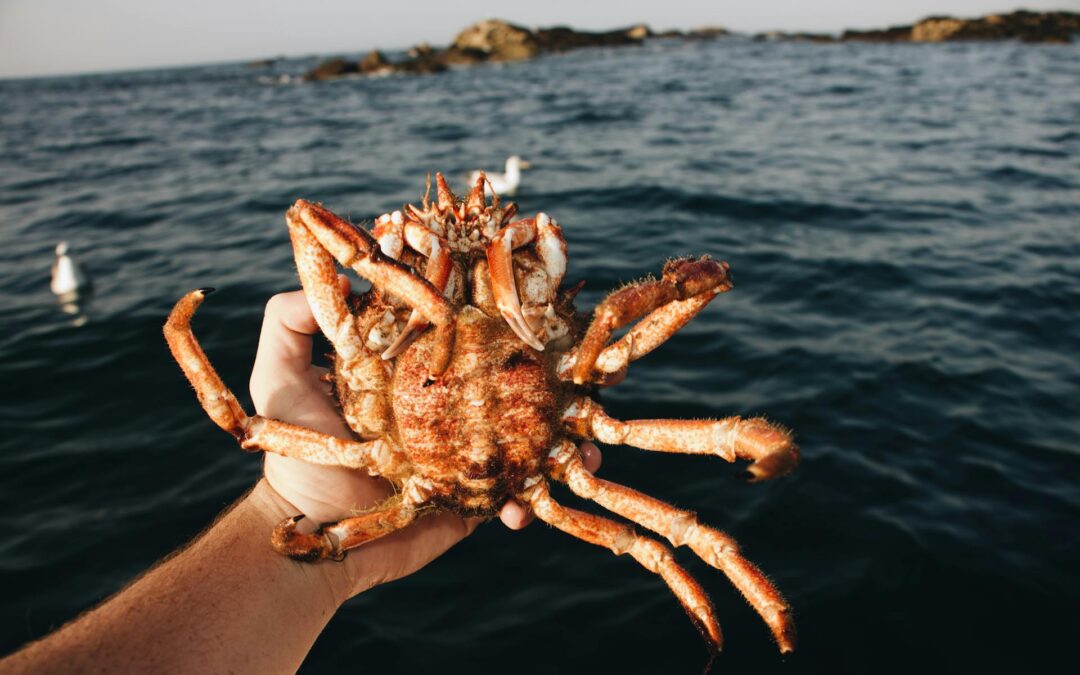The succulent sweetness of fresh, cooked crab is a culinary delight, but its delicate nature means understanding how long it stays fresh is crucial. Improper storage can lead to foodborne illness, ruining your meal and potentially causing serious health issues. This comprehensive guide will delve into the intricacies of storing cooked crab, offering actionable advice to ensure you enjoy this delicious seafood safely and maximize its shelf life.
Understanding the Perishability of Cooked Crab
Cooked crab meat, unlike its live counterpart, is highly susceptible to bacterial growth. The cooking process kills many harmful bacteria, but it doesn’t eliminate the risk entirely. Once cooked, the crab’s natural defenses are compromised, making it a prime target for spoilage. Therefore, proper refrigeration and timely consumption are paramount.
Several factors influence how quickly cooked crab spoils. These include the initial freshness of the crab, the cooking method, and the storage conditions. A crab that was already somewhat old before cooking will spoil faster than one that was impeccably fresh. Similarly, improper cooking techniques can increase the risk of bacterial contamination.
How Long Cooked Crab Lasts in the Refrigerator
Ideally, cooked crab should be refrigerated within two hours of cooking. This is especially crucial during warmer months when bacteria multiply more rapidly. Storing it promptly helps slow down the spoilage process and maintain its quality.
Once refrigerated, cooked crab meat typically lasts for 3 to 4 days. However, this is a general guideline, and it’s always better to err on the side of caution. Pay close attention to the crab’s smell, texture, and appearance; any signs of spoilage should prompt immediate disposal.
Recognizing Spoiled Crab
Spoiled crab meat will exhibit several telltale signs. A sour or fishy odor is a strong indicator of spoilage. The texture may become slimy or mushy, a significant departure from its firm initial state. Discoloration, turning from a pleasant white or light pink to a grayish or brownish hue, is another warning sign.
Never hesitate to discard crab meat if you notice any of these changes. Your health is far more important than a spoiled meal. When in doubt, throw it out—this is the golden rule of food safety.
Freezing Cooked Crab for Extended Storage
Freezing is an excellent method for extending the shelf life of cooked crab meat considerably. Proper freezing can preserve the crab’s flavor and texture for several months, allowing you to enjoy it even outside the peak crab season.
Before freezing, ensure the crab meat is thoroughly cooled. Divide the crab into smaller portions, suitable for individual meals, and place them in airtight freezer bags or containers. This prevents freezer burn and maintains the quality of the crab meat.
Freezing Techniques for Optimal Quality
Consider using a vacuum sealer for the best results. Vacuum sealing removes air, which is a major contributor to freezer burn and oxidation, thereby preserving the crab’s freshness longer. Alternatively, tightly sealed containers are a suitable alternative.
Always label your packages with the date of freezing. This helps you track how long the crab has been frozen and ensures you consume it within the recommended timeframe. Properly frozen cooked crab can typically last for 2 to 3 months, maintaining its quality and safety.
Thawing and Reheating Cooked Crab
When ready to use frozen crab meat, thaw it safely in the refrigerator overnight. Never thaw crab meat at room temperature, as this encourages bacterial growth. Once thawed, the crab meat should be cooked thoroughly before consumption.
Reheating is best done gently to avoid overcooking, which can make the crab dry and tough. You can reheat it in a pan with a little butter or in the microwave until heated through. Avoid reheating the crab multiple times, as this reduces its quality.
Tips for Maximizing the Shelf Life of Cooked Crab
To ensure your cooked crab remains fresh for as long as possible, follow these simple yet effective tips. Store the crab in a shallow, airtight container to facilitate faster cooling. Avoid overcrowding the container, allowing proper air circulation.
Keep the crab in the coldest part of your refrigerator, ideally on a lower shelf away from the door. Avoid storing it near strong-smelling foods, as it can absorb odors. Always wash your hands thoroughly before and after handling the crab.
Conclusion: Prioritizing Safety and Enjoyment
Enjoying fresh, cooked crab is a delightful experience, but prioritizing food safety is paramount. By understanding the factors that influence its shelf life and adhering to proper storage and handling techniques, you can enjoy this delicacy safely and maximize its deliciousness. Remember, when in doubt, throw it out; your health is always worth it.
This guide provides a comprehensive overview of how long cooked crab remains safe to eat. By following these guidelines, you can extend the shelf life of your crab and prevent foodborne illnesses. Remember that observing the crab’s appearance, smell, and texture is critical to ensuring its safety. Enjoy your crab responsibly!

